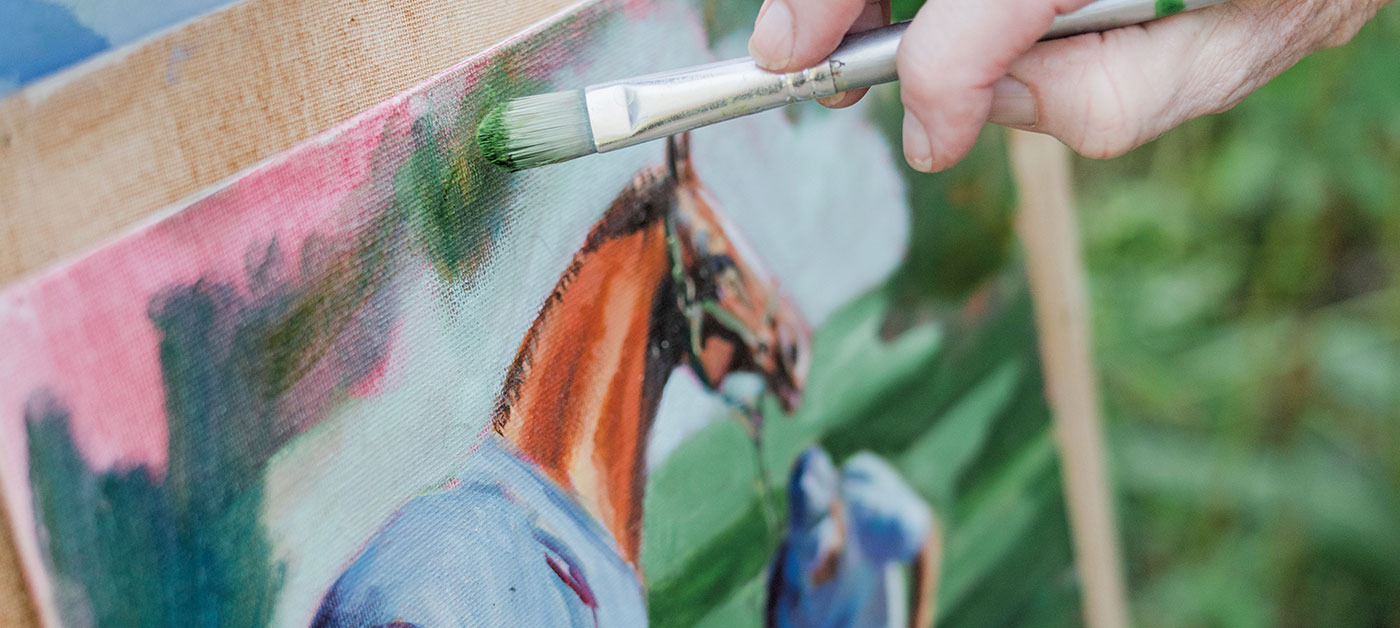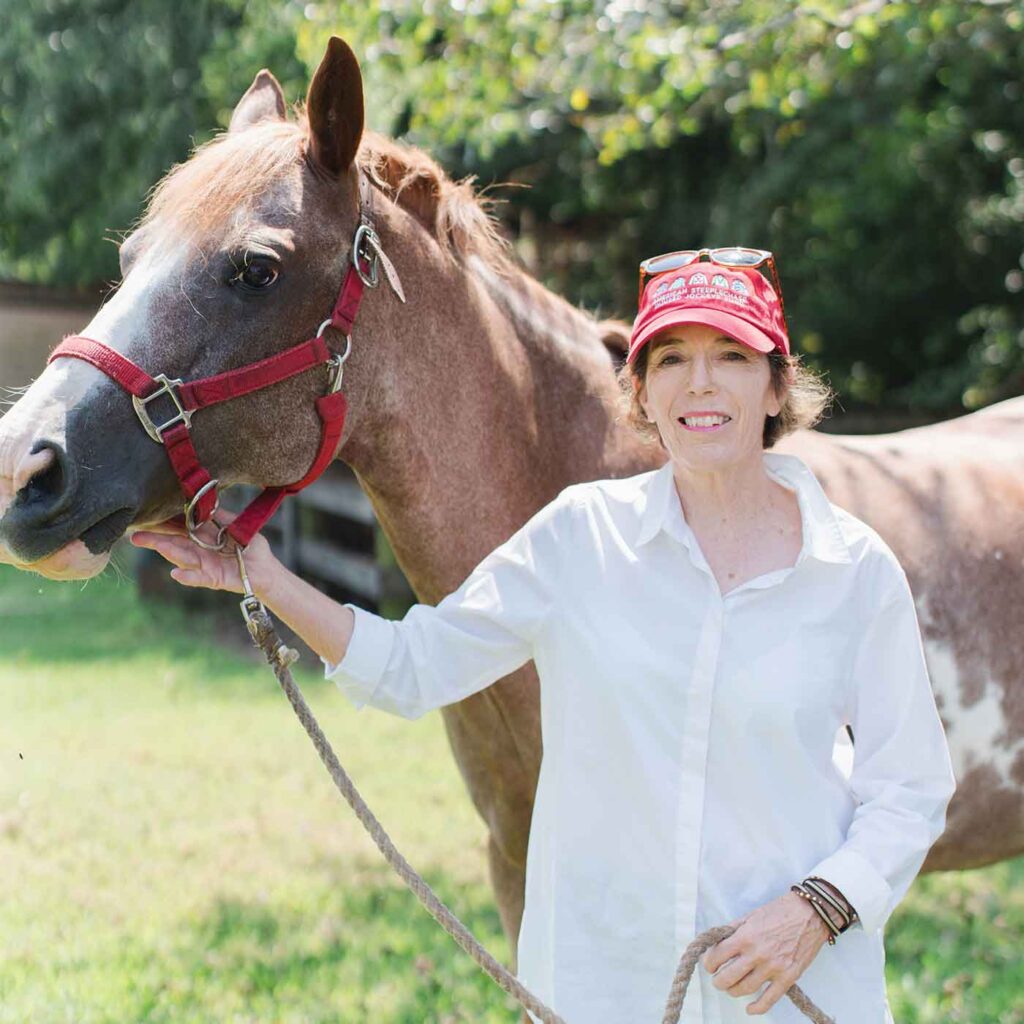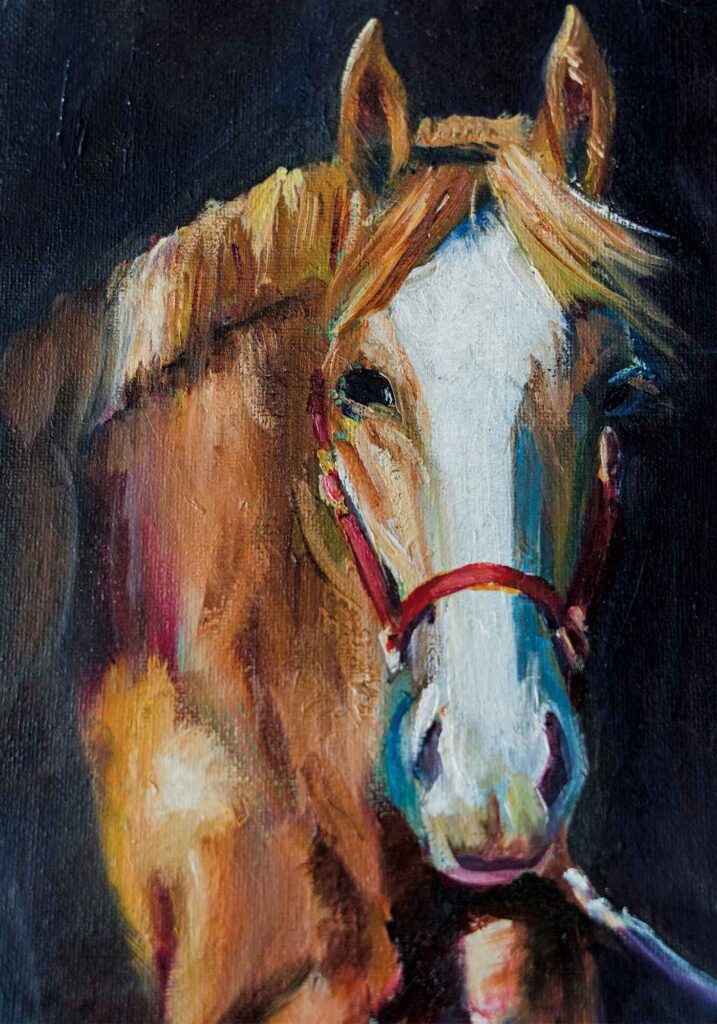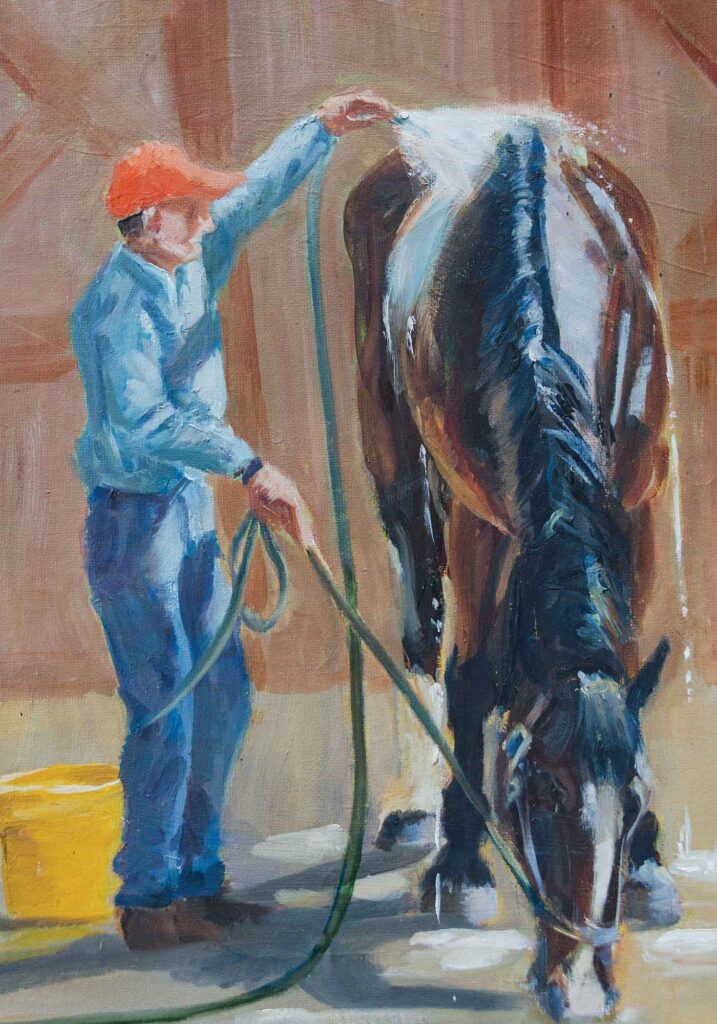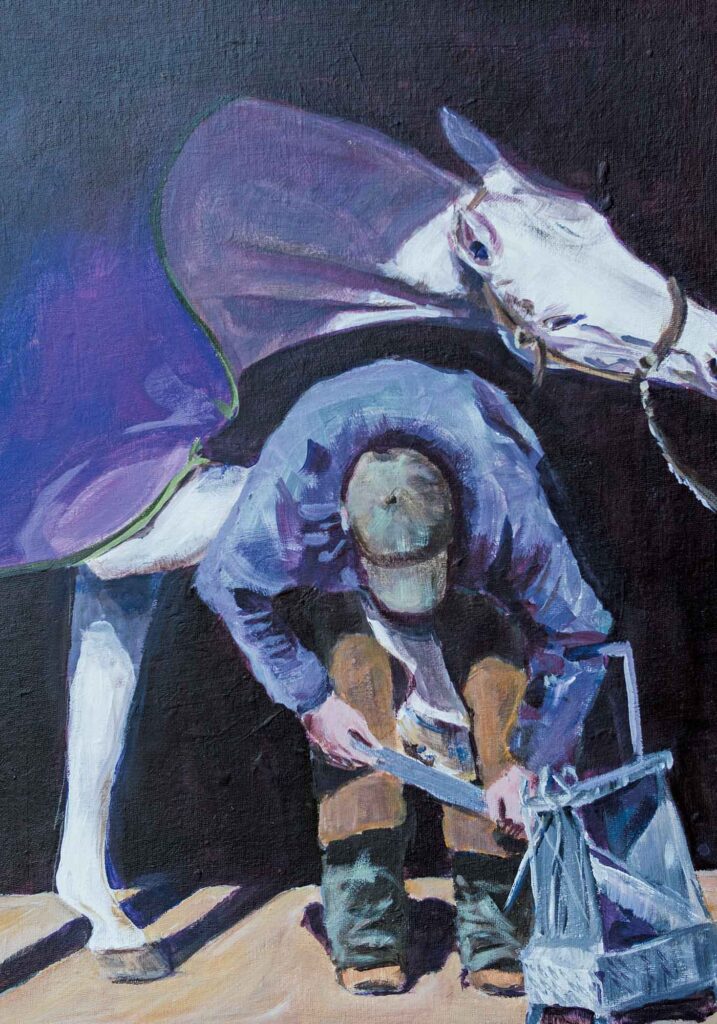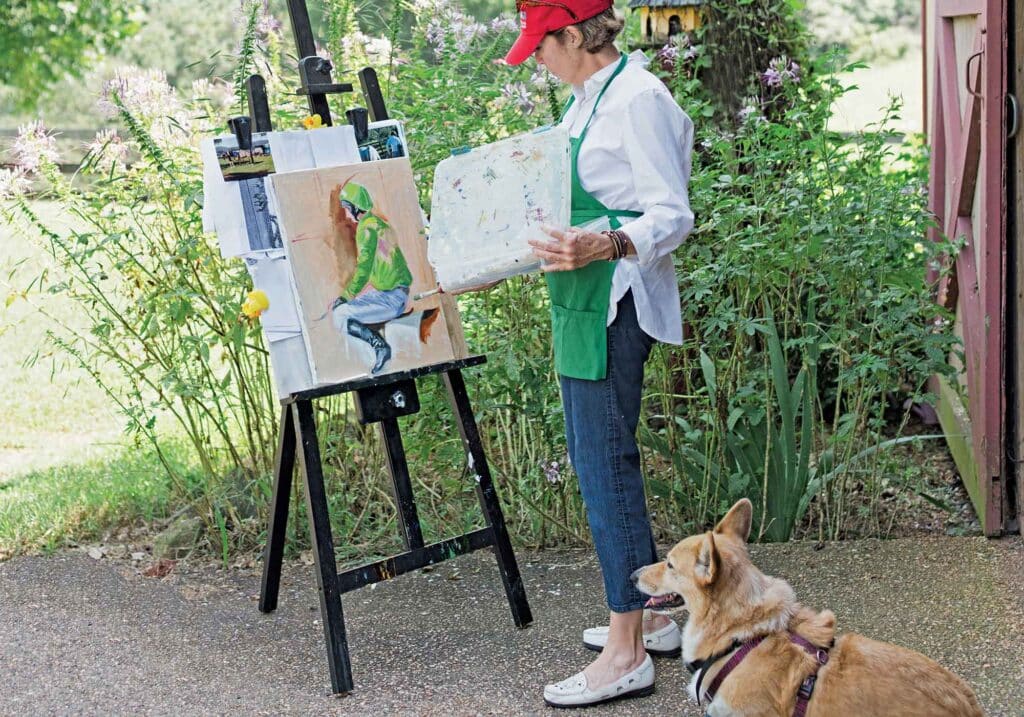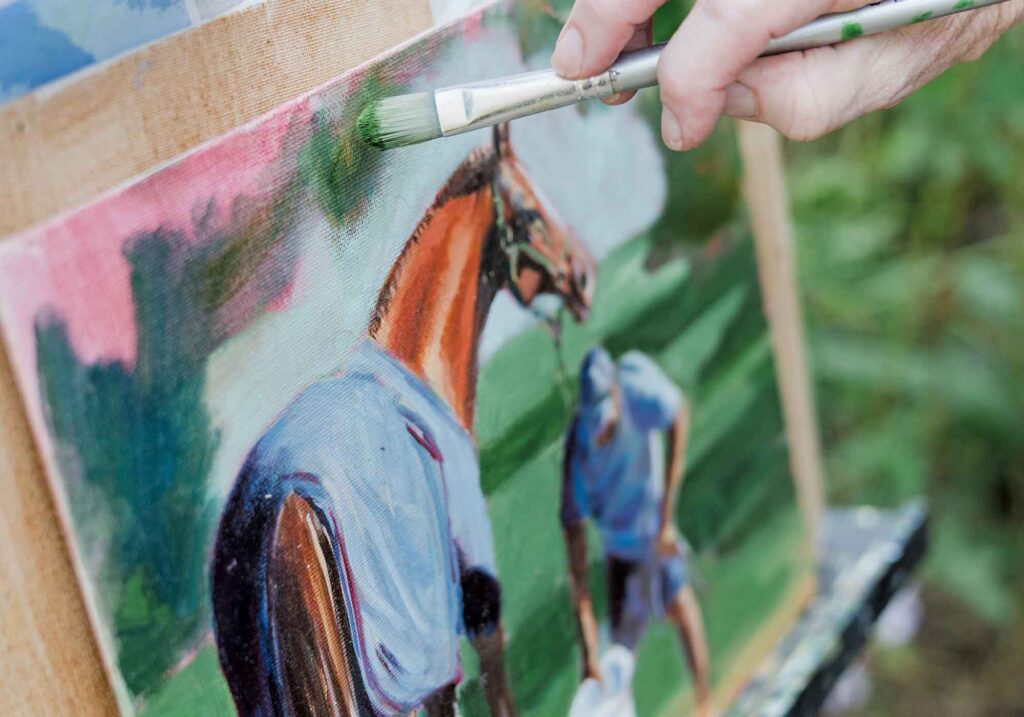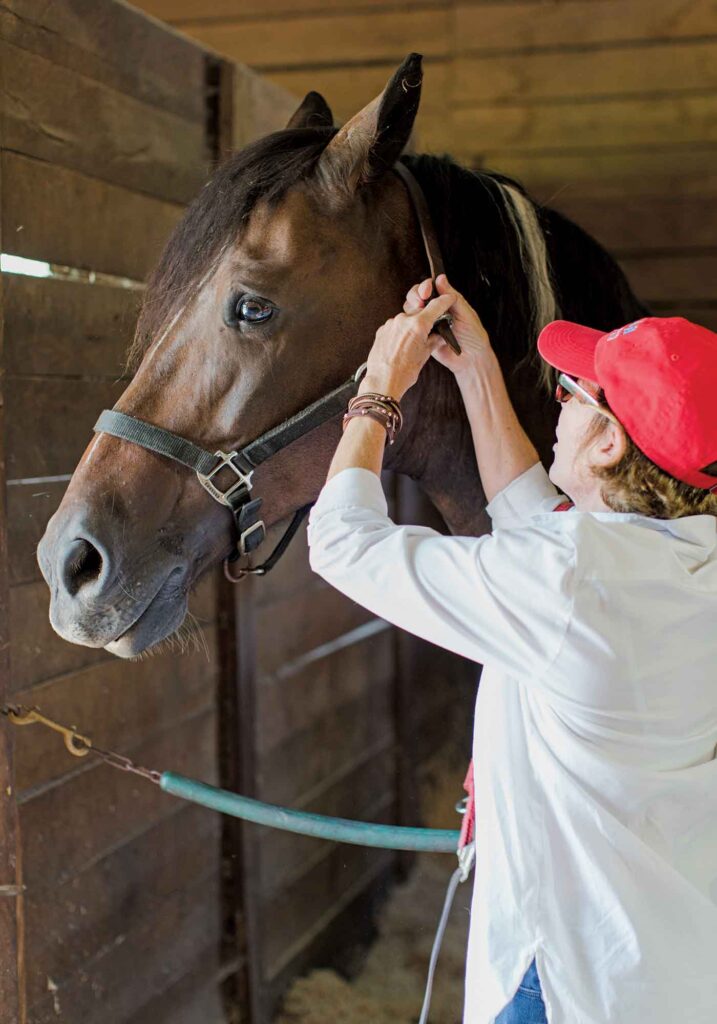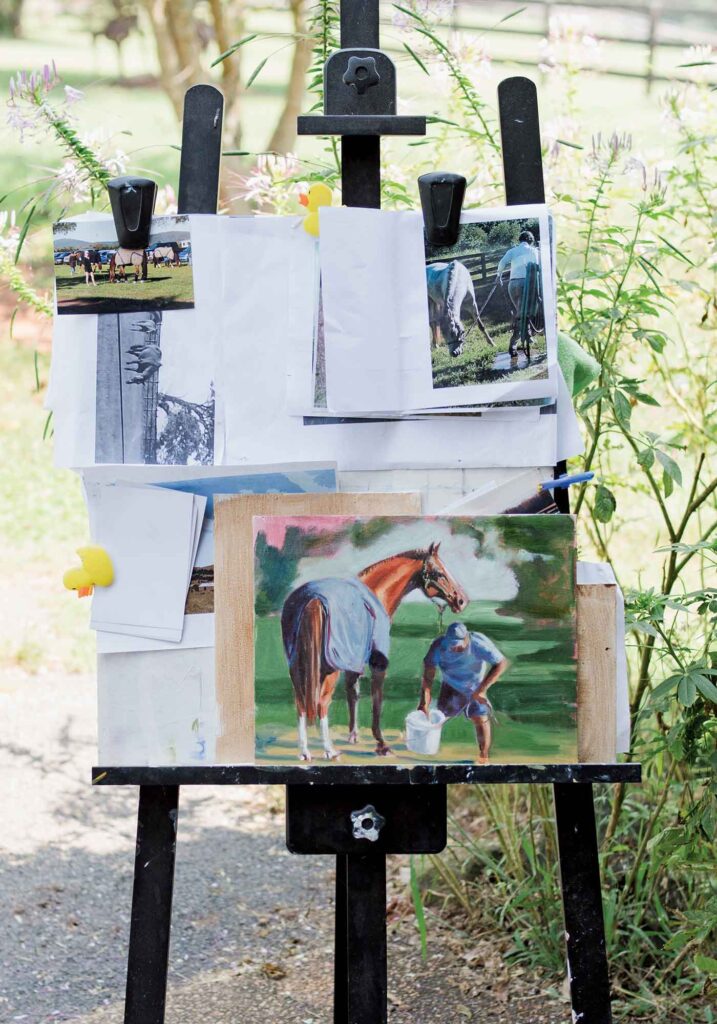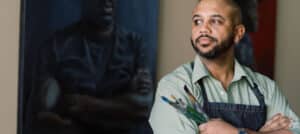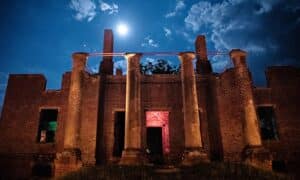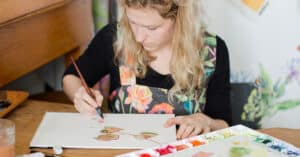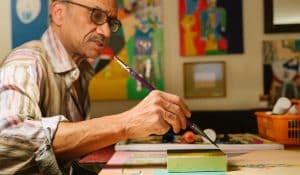Two passions that began in her childhood guide artist Martha Strawther through life. The first, horses, has played out in years of competitive riding and teaching horseback riding. Strawther now serves as the Executive Director of the Montpelier Steeplechase and Equestrian Foundation at James Madison’s Montpelier. As any horse aficionado knows, the passion for horses usually begins quite early, and can’t be tamed. “I was born horse crazy,” Strawther remarks. “Someday, they’ll find that it’s a recessive gene.”
A Life with Horses
Sitting in her office in the Montpelier complex, Strawther surrounds herself with the trappings of Montpelier’s Hunt Races—files and papers galore, a framed poster advertising the races—and the signs of a serious equestrienne: a corgi at her feet and the barn-slash-office cat curling around her desktop monitor. There, evidence of Strawther’s other passion, equestrian art, is visible. There’s a framed painting of a jockey on horseback on the wall and several canvases casually leaning on a table. Strawther’s integration of her equine and artistic passions continues outside of the workplace. She tells me that she uses the aisle of the barn at home, as well as her tack room, to dry her paintings.
To have two such all-consuming interests requires a daunting level of commitment and energy. An early riser, Strawther starts her day on horseback, with a solitary ride on one of the two horses she and her husband keep. After her barn chores and her work for Montpelier’s Hunt Races in November, Strawther turns to painting for at least an hour each day. Of course, this sometimes involves more horse time, as Strawther prefers to create outside. The equestrian artist will throw hay to the horses to get about 20 minutes of sketching time en plain air. “Horses know when you’re sketching; they really like it! You’re concentrating on them; they know there’s a connection, and they like that. So really, I’m killing two birds with one stone.”
Growing as an Artist
Even with such multitasking, which makes for full days, Strawther is inspired and energetic about every aspect of her art. She took several week-long painting intensives in Exmoor, England. There, with the amazing views of Exmoor National Park, she painted all day long. When she wasn’t painting, she was talking about painting and getting feedback from her Yorkshire instructor. Strawther feels it has led to a real breakthrough for her. She had wanted to paint landscapes for years but couldn’t decide what she needed to depict and what elements didn’t contribute to the painting. This “editing,” as Strawther terms it, was beyond her grasp for several years, but now she’s begun working with a new technique. She uses a palette knife to layer on the paint, creating a strong impasto, a sense of the thickness and movement of the paint. She creates on small canvasses, which allows her to complete most of the image in a single session, but it’s a challenging decision to balance the depth of the paint and movement of the palette knife across such a small space. Strawther successfully negotiates this obstacle with beautiful movement of light and color across hay fields. She may have been inspired by England, but these are clearly Virginia views.
A Love for Virginia Landscapes
The turn to landscape is interesting. Strawther grew up in Denver and lived in Southern California, two places known for both the majesty of their landscape and the quality of their light. But it wasn’t until Strawther moved to Charlottesville in 1998 that she finally felt a sense of connection, as she describes it, to the landscape. “The landscape here tugs at me in a way that it didn’t in California and Colorado.” And—bravely, given that we are talking on a muggy August day—Strawther praises the Virginia humidity for diffusing the light in a way that makes painting easier for her. Finally, there’s the green—“so much green,” she comments excitedly, even though she’s lived in Virginia for over two decades. Her enthusiasm for the landscape is integral to her new work because Strawther says she can’t paint anything well if she doesn’t love it. Fortunately, her love for horses and the landscape guarantees that she’ll have plenty of opportunities to be as prolific as she likes.
If Strawther has a fault as an artist, it’s that she’s too modest about her abilities as an equestrian artist and the work she puts into her painting. She’s amazingly dexterous, moving between watercolor, oil and acrylic, and impressively undeterred about trying something new. This confidence probably dates back to her early childhood when her mother introduced her to art. Though not a trained artist herself, she enjoyed teaching her daughter the basics of drawing. In high school, Strawther took a yearlong intensive class in fashion illustration, which is still evident in her work. “I got very comfortable with the figure,” she comments, and can still describe, gratefully, the experience of working with her high school teacher. The class required constant production across a range of media: pen and ink, watercolor, pencil and so forth. As a working adult, Strawther kept drawing and took the occasional art class, but it wasn’t until she and her husband acquired two horses that Strawther turned to what many think is the true test of the artist: the horse.
An Equestrian Artist With Mastery of Line
For artists, a rendering of a horse is an opportunity to show off an understanding of anatomy, proportion and overall ability. Though she is essentially self-taught, Strawther has a rigorous understanding both of her subjects and painting techniques, and so the depiction of horses has been a natural evolution rather than a forced study. Looking at some of Strawther’s paintings, depicting vignettes at the track or the hunt, I’m struck by how much she likes a moment of anticipation, such as the jockeys in line before the results are announced, the horse about to make the leap or their landing. Her use of line to depict this kind of tension is an artistic challenge that she navigates successfully.
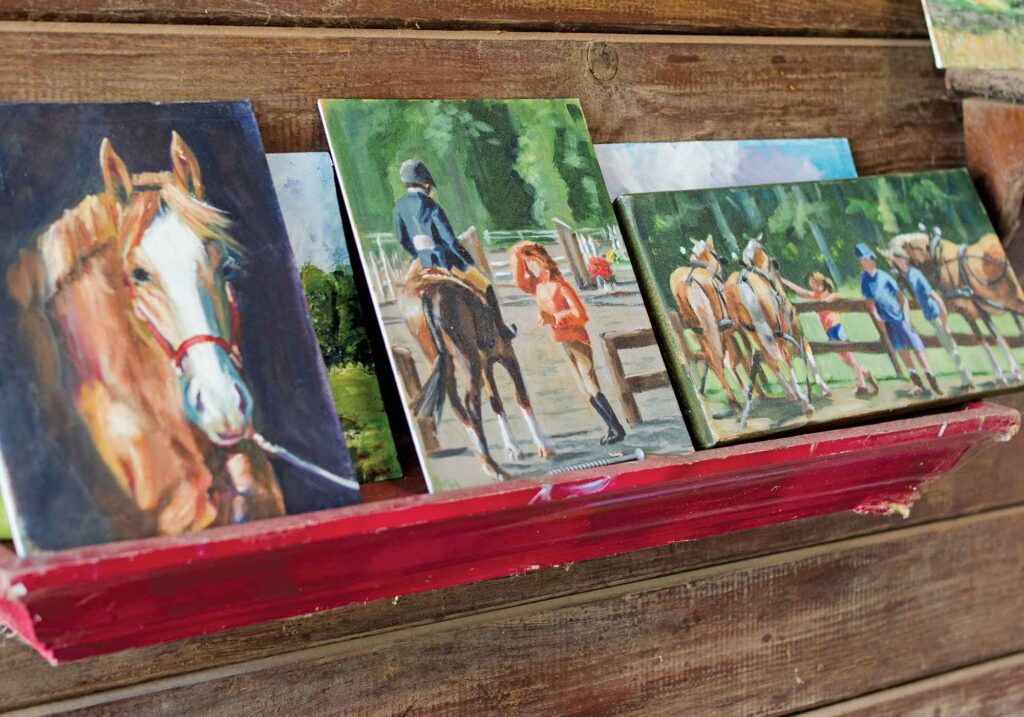
In thinking through her next steps as an equestrian artist, Strawther wants to combine these new landscapes with her horses, making quintessential Virginia scenes. This will raise questions of proportion and scale, and refine her editing skills, but Strawther is up to the task. The way in which she’s visualizing these paintings is clear. It’s a careful next step for an artist who is getting more and more credit and increased sales of her paitings.
Lessons learned from horseback riding inform Strawther’s equestrian painting mindset. “Painting is like horseback riding, you have to do it to get better,” Strawther tells me. “And you have to be willing to make mistakes.” She shares with me the story of a visit to a friend’s house years ago to see an early painting by an artist whose current works she had admired: the early work was not nearly as strong. That gave her a boost of confidence to keep pushing forward, and now, despite a full schedule, she manages to paint every day. And while her day job directing the hunt at Montpelier is ramping up as November approaches, Strawther is also hoping to go back to England, maybe someday for an entire season. She’d also like to explore portraiture, and maybe get back into teaching horseback riding a little bit and continuing to pursue her lifelong passions to the fullest. ~
Virginia has a thriving art community. Discover the beauty in the paintings of Meg West, Maria Pace, S. Ross Browne and others. And, if you are also a lover of botanical gardens, farms, barns, chickens & horses and botanical art like Strawther, be sure to explore our barn & garden content. For equestrians, consider a vineyard tour on horseback or the Upperville Colt & Horse Show, Gold Cup or make a plan for tailgating at the Montpelier Hunt Races.
CATHERINE MALONE has written for Wine & Country since its inception. She has been an instructor at William & Mary, UVA and Virginia Commonwealth University, where she is currently pursuing her Ph.D. She lives in Charlottesville with her three daughters.
RACHEL MAY enjoys adventuring across the globe to capture photography in beautiful lighting and with impeccable composition. Her deepest desire is to deliver a genuine document that is well balanced between fine art, documentary and classic portraiture—preserving her client’s most valued moments. Rachel’s work has been featured in Southern Living, Brides, Southern Weddings, Virginia Wine & Country Weddings and more.
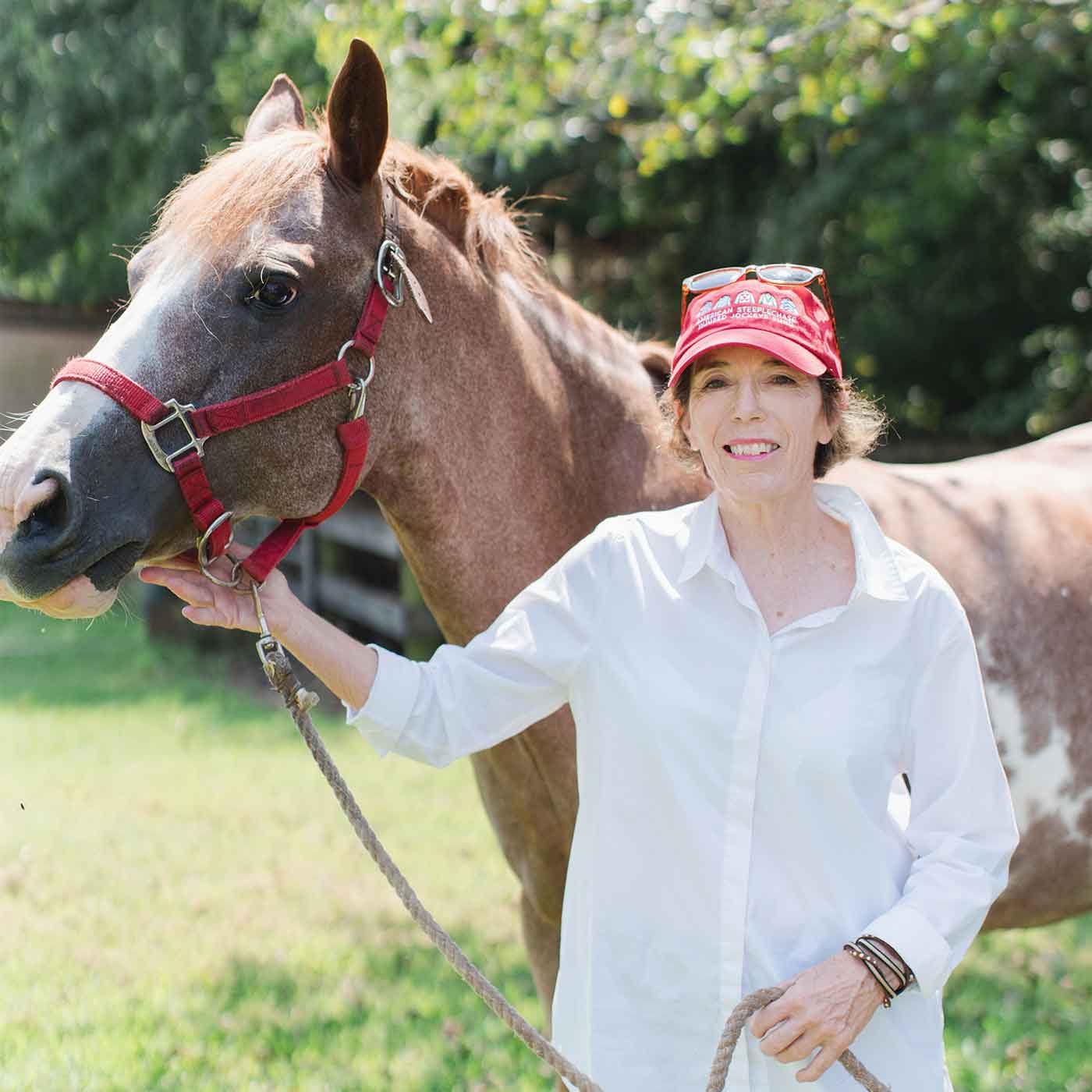
James Madison's Montpelier at Montpelier Station, Orange County, Va, 22960

